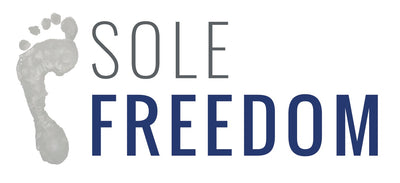If you’re a doctor, physical therapist, chiropractor, massage therapist, yoga or Pilates instructor, personal trainer, or coach working with the lower body — this blog is for you.
It's time for a shift.
The people we serve are struggling with pain, dysfunction, and dependence on passive treatments that offer temporary relief. We now have the knowledge and tools to do better — and that means raising the standard of care across our professions.
Whether you’re addressing foot pain, knee instability, hip tightness, or chronic lower-body injuries, treating symptoms without addressing the root cause is no longer acceptable.
Why We Need Consensus
In aviation, pilots use a pre-flight checklist to ensure all critical tasks are performed before takeoff. It’s not about memorization or experience — it’s about standardization for safety and performance.
We believe the same model applies to health professionals working with the lower extremity.
If your job is to help people regain or maintain function in the hips, knees, ankles, and feet — there should be a basic, agreed-upon checklist of best practices to ensure consistent, effective care. A standard that helps us all do our jobs better and protect the people we serve.
Defining the Goal: What Is Natural Function?
For clarity, let’s define some key terms:
- Health professional: An individual whose primary role is helping others restore natural function
- Lower extremity: Hip, thigh, knee, leg, ankle, and foot
- Natural function: Movement that is strong, stable, mobile, adaptable, and pain-free
- Best practices: Techniques and frameworks that protect from unnatural inputs and reintroduce natural behavior
If we agree that our objective is to restore natural function, then we must orient our interventions — whether clinical, educational, or movement-based — around that principle.
Six Critical Best Practices for Lower Extremity Health
Below is our proposed Lower Extremity Best Practices Checklist — the equivalent of a pre-flight checklist for every session, program, or care plan involving the lower body.
These six practices represent the minimum standard of care for any health professional seeking to restore lasting function and reduce dependence on disease care.
✅ 1. Footwear Education
Help your clients understand the difference between natural and unnatural footwear. Educate on reducing time in compressive, rigid shoes and recommend natural footwear that is foot-shaped, flat, flexible, and feel-based. Footwear is often the root cause of foot dysfunction.
✅ 2. Chair Audit
Modern life keeps people in chairs for hours. Assess sitting habits and promote reducing chair time. Encourage more ground-based movement, hip mobility, and natural resting positions that restore function.
✅ 3. Balance Screening
Poor balance is a red flag for future injury. Test single-leg balance (ideally eyes closed) and recommend simple daily balance drills using tools like balance beams, barefoot training, or playful activities.
✅ 4. Resting Squat Screening
The deep resting squat is a vital human position. Inability to reach and hold this position is often a result of hip, ankle, or foot limitations. Use it as a diagnostic tool — and as a movement to train.
✅ 5. Daily Movement Session
Encourage a short, consistent daily practice that includes:
- Walking (barefoot or in natural footwear)
- Foot mobility and strength drills
- Balance training
- Hip mobility or ground-based movement
This is where the reconditioning of strong, pain-free feet and hips happens.
✅ 6. Pain Education
Teach clients that pain is not a mistake — it's a message. Help them shift from avoiding or muting pain (via drugs or passive therapy) to understanding it as feedback. Empower them to explore causes, not just manage symptoms.
Why This Matters
If you're working with someone’s body — and especially their foundation — you have a responsibility to look at the whole chain, not just the symptom.
These six practices are not just techniques. They are a philosophy of care that:
- Encourages patient agency
- Reduces reliance on passive treatments
- Promotes natural movement
- Prevents injury
- Supports long-term resilience
Failing to incorporate these principles into your practice means missing critical opportunities for real transformation.
We're Building Consensus — Join Us
We believe that consensus among professionals is powerful. Not because it makes us right — but because it signals shared standards, mutual accountability, and collective evolution.
If you agree with this checklist and believe in raising the bar for lower body care, we invite you to endorse these best practices.
Simply email: nick@thefootcollective.com
Include your:
- Name
- Profession
- Credentials
- Current workplace or clinic
If you disagree with these practices, we still want to hear from you. We host quarterly roundtable discussions where professionals from across disciplines can share perspectives and collaborate on improving this framework.
Consensus isn’t about perfection. It’s about progress through conversation.
Summary
- The lower extremity deserves better care — and that starts with agreed-upon best practices.
- These 6 practices form the foundation of restoring natural function and reducing reliance on symptom-treatment models.
- Health professionals have the opportunity to lead this shift — and be part of a growing movement focused on education, empowerment, and real outcomes.
Final Thoughts
This is a call-in, not a call-out.
If you're in the business of helping people heal and move better, this checklist is your foundation. Whether you’re guiding rehab, teaching squats, prescribing footwear, or working with pain — these principles apply.
Together, we can build something better.
Let’s raise the standard — one sole at a time.

